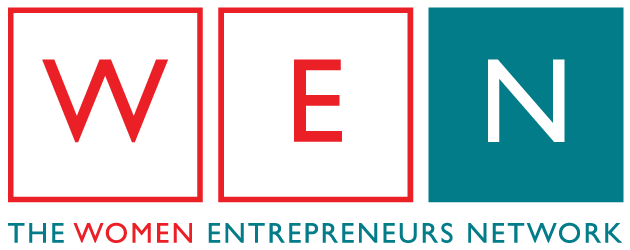Q3 2025 Checklist for Entrepreneurs in Hong Kong

1. Financial Management
- Mid-Year Financial Review:
- Analyze H1 2025 performance and fine-tune your Q3 and Q4 projections.
- Assess profitability, cash reserves, and ROI on marketing or R&D investments.
- Prepare for Provisional Tax Payments:
- Review profits tax obligations and set aside funds for provisional profits tax payments due in Q4.
- Currency Monitoring:
- With fluctuating global currencies, evaluate forex risks if you trade internationally (e.g., USD to HKD or RMB).
- Consider locking in favorable rates for transactions with hedging strategies.
- Grants and Subsidies:
- Apply for relevant funding schemes like the SME Export Marketing Fund (EMF) or BUD Fund before the year-end rush.
- Tariff Updates:
Stay informed about trade tariffs affecting imports/exports, particularly with the US-China trade situation and changes in ASEAN markets under RCEP.
2. Operations and Supply Chain
- Inventory and Logistics:
- Conduct a mid-year inventory audit to adjust for seasonal demand changes.
- Stock up for Q4 festivals, such as Mid-Autumn Festival (late September) and early Singles’ Day (11.11) preparations.
- Supplier Diversification:
- Mitigate risks from tariffs or geopolitical tensions by diversifying suppliers across tariff-free regions (e.g., ASEAN or CEPA benefits for China trade).
- Customs and Compliance:
- Ensure your import/export documentation complies with updated RCEP, CEPA, or other trade agreements.
- Consider working with a trade consultant or customs broker for smoother operations.
3. Strategic Growth
- Market Expansion:
- Explore opportunities in ASEAN markets, leveraging Hong Kong’s role as a gateway under RCEP.
- For cross-border e-commerce, optimize logistics and marketing for Mainland China using platforms like Tmall Global or HKTVmall.
- Brand Localization:
- Tailor marketing campaigns to regional markets, focusing on cultural nuances for Q3 festivals and holidays.
- Economic Diversification:
- With ongoing global uncertainty, explore new revenue streams (e.g., digital products, services, or subscription models).
4. Marketing and Sales
- Seasonal Promotions:
- Focus on marketing campaigns tied to Mid-Autumn Festival (late September) and pre-Singles’ Day promotions.
- Digital Marketing Trends:
- Leverage AI tools for personalized content and automated customer engagement.
- Stay active on local platforms like WeChat, Xiaohongshu (RED), and Instagram, which are popular in Hong Kong and Mainland China.
- Sales Strategy Optimization:
- Reassess sales channels (e.g., brick-and-mortar vs. e-commerce) to adjust for changing customer preferences.
- Offer value-added services, such as free shipping or extended warranties, to boost conversions.
5. Networking and Events
- Attend Industry Events:
- Participate in key trade shows and expos in Hong Kong, such as:
- HKTDC Food Expo (August 2025).
- Mega Show Part 1 (October prep starts in Q3 for household and giftware buyers).
- WEN events throughout the year and includes entrepreneur focused workshops such as Mastering Finance, and more.
- Use these events to connect with suppliers, manufacturers, and distributors.
- Public Speaking and Thought Leadership:
- Host or participate in webinars, panel discussions, or workshops to establish expertise in your industry.
- Government Support Programs:
- Check InvestHK or HKTDC for networking opportunities and government-backed events.
6. Innovation and Technology
- Digital Transformation:
- Adopt or upgrade tools for efficiency (e.g., AI-driven CRMs, inventory systems, or marketing platforms).
- Explore Hong Kong’s Technology Voucher Programme (TVP) to subsidize new tech adoption.
- R&D Focus:
- Use Q3 to refine prototypes or test new products to prepare for Q4 launches.
- AI and Automation:
- Integrate AI tools into operations or marketing to save time and improve customer targeting.
7. Legal and Compliance
- Review Trade Agreements:
- Stay updated on RCEP and CEPA benefits for tariff reductions in regional trade.
- Monitor changes in US-China trade policies to ensure compliance with tariffs or export restrictions.
- Intellectual Property Protection:
- Secure trademarks, patents, or copyrights for new products, particularly if expanding into Mainland China or ASEAN.
- Annual Compliance:
- Ensure business registration and licenses are up to date, especially if you’ve expanded operations since Q1.
8. Team and Leadership
- Upskilling:
- Train staff in areas like digital marketing, trade compliance, or e-commerce strategies.
- Leverage the Reindustrialisation and Technology Training Programme (RTTP) for subsidized training.
- Performance Incentives:
- Reward team efforts with performance bonuses or perks to maintain morale during busy periods.
- Hiring and Outsourcing:
- If expanding operations, consider outsourcing non-core functions (e.g., accounting, HR) to focus on growth.
9. Sustainability and CSR
- Green Initiatives:
- Explore funding under the Green and Sustainable Finance Grant Scheme to implement eco-friendly practices.
- Reduce waste and adopt sustainable packaging for products.
- Community Engagement:
- Organize or participate in community activities, such as charity events during the Mid-Autumn Festival, to build goodwill.
10. Personal Development
- Skill Development:
- Take courses in areas such as trade compliance, AI adoption, or leadership.
- Health and Balance:
- Schedule time to recharge during the summer months while planning for Q4.
- Goal Review:
- Reflect on your personal and professional Q3 goals and adjust for the remainder of the year.


